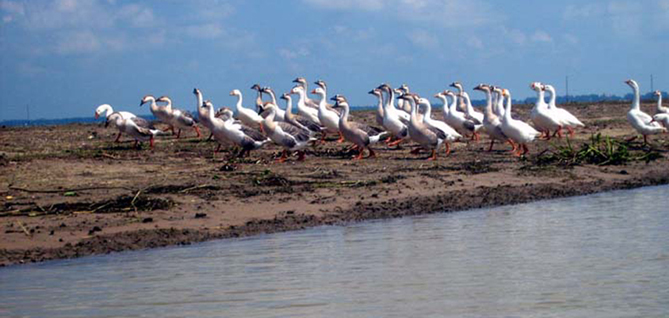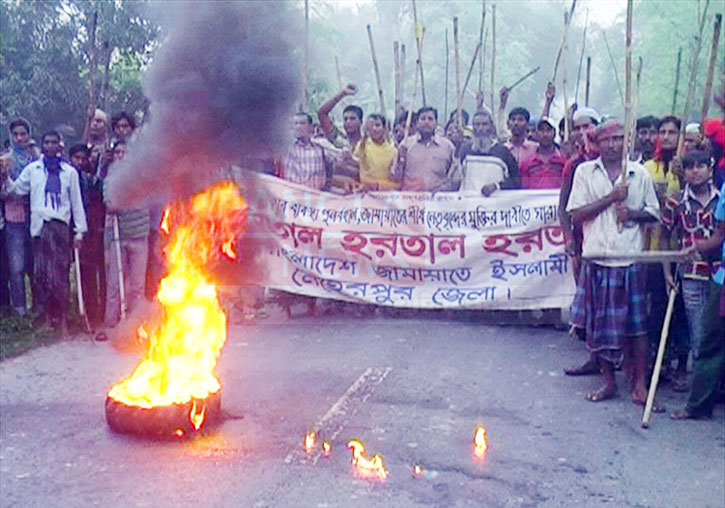 RAJSHAHI, Nov 13, 2013 -Scientists and development activists have voiced for formulation of a law restricting further encroachment and degradation of wetland, biodiversity and ecosystem of Chalan Beel area.
RAJSHAHI, Nov 13, 2013 -Scientists and development activists have voiced for formulation of a law restricting further encroachment and degradation of wetland, biodiversity and ecosystem of Chalan Beel area.
They also sought political will and commitment for resisting unethical intervention in the matter with restoration of the Chalan beel that is the largest and important wetland in the country’s northwest region.
“We need long-term plan alongside need-based steps for Chalan Beel restoration,” said Dr Redwanur Rahman, Associate professor of Institute of Environmental Sciences of Rajshahi University.
He focused on the real picture of Chalan Beel region, urging the government to adopt a long-term plan for restoration of the beel area that covers 12 upazilas of Natore, Pabna, Sirajgonj and Naogaon districts.
Rivers and their tributaries are formed a water network over the entire chalan beel area. The rivers are Atrai, Gur, Korotoa, Boral, Mara Boral, Tulsi, Chenchma, Bhadai, Chikni, Bogomja, Khubjipur, Telkupi and their innumerable tributaries, interconnecting canals and channels.
Besides, the beel is one of the largest productive regions of the country. There are 12 rivers and several tributaries here. But, unfortunately, many of those have lost their heritages due to various unplanned infrastructures, Dr Rahman has said.
Referring to various research findings he added the identified species of fish is 129, annelids eight, arthropods 11, mollusces 13, amphibians seven, reptiles 17, birds 34, mammals eight and aquatic vascular plants 52 in the beel. The number of cultivable fish specie is 7 and self recruited fish species more than 50.
Prof Dr Abdul Mannan of Zoology Department of Rajshahi University called for removing the illegal embankments to help regain the normal flow of the rivers in the Beel area and save the water bodies as well as its ecological balance.
Many of the wetlands of the Beel have become cultivation land and using of injudicious chemical fertilizers and pesticides on the farming fields is posing a serious threat to the ecosystem and biodiversity especially fisheries resources.
Prof Mannan suggested rational use of inorganic fertilizers and pesticides, and proper management of industrial effluents. Integrated pest management programmes could help minimize the environmental effects of these chemicals.
“There is huge pollution pressure, climate change impact, unsustainable development interactions,” he demanded steps to remove all the illegal embankments on the Boral River to navigable the river and save Chalan Beel.
Tonmoy Sanyal, Divisional Coordinator of Bangladesh Environmental Lawyers Association (BELA), said steps to remove all the illegal embankments on the Boral River to navigable the river and save Chalan Beel, the largest water body in the northern region are needed.
eNewsDesk




































